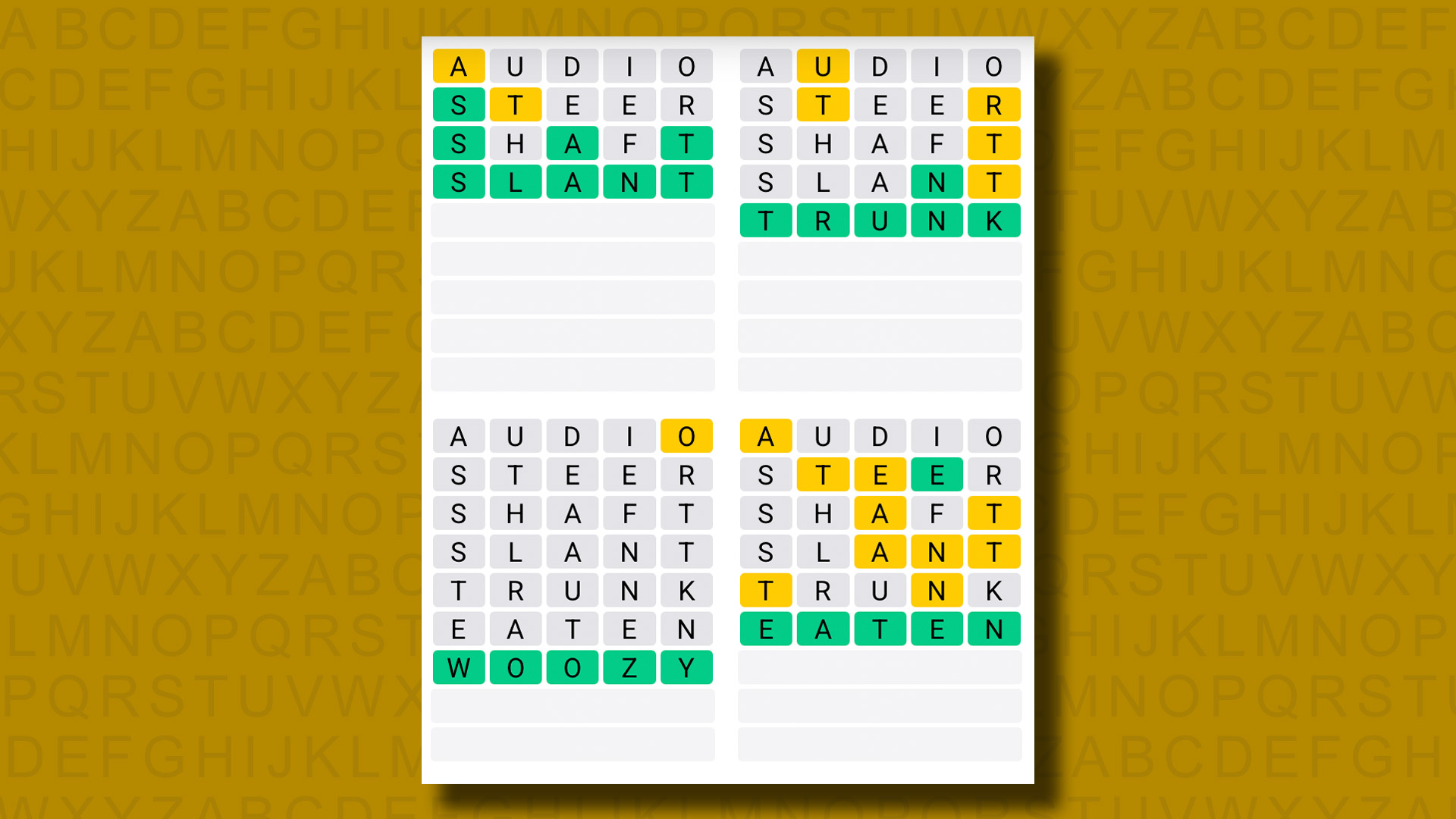‘it’s One Of Those Infinite Time-loop Situations You Might Have Heard About’

This is an edition of the Books Briefing, our editors’ weekly guide to the best in books. Sign up for it here.
What sort of work is Solvej Balle’s On the Calculation of Volume? The Danish author’s seven-novel series, whose first two volumes were published in English last month, belongs to a fiction subgenre best explained by Andy Samberg in the movie Palm Springs: “It’s one of those infinite time-loop situations you might have heard about.” Samberg’s blithe delivery captures both his character’s cynicism and the mind-numbing situation itself—stuck in the same day, over and over, with seemingly no way out. (He shares both the predicament and the blitheness with Bill Murray’s character in the time-loop archetype, the movie Groundhog Day.) But Samberg is also inoculating viewers against the familiarity of the premise, while launching them into the central dilemma of all these works: Where do we go from here? In Balle’s take on the subgenre, her protagonist, Tara Selter, goes much further in her endless rendition of a single fall day than a reader would have any reason to expect.
First, here are five new stories from The Atlantic’s Books section:
- The carpetbagger who saw Texas’s future
- Read these six books—just trust us.
- Adapting One Hundred Years of Solitude sounded impossible. It wasn’t.
- America needs to radically rethink what it means to be old.
- Nikki Giovanni’s wondrous celebrations of Black life
Every architect of this trope creates a new set of rules, and Balle has a twist too, as Rhian Sasseen wrote in The Atlantic this week. “In contrast with most popular iterations,” Sasseen writes, Tara’s “physical location remains unconstrained.” Unlike in Palm Springs, where the protagonist wakes each morning in the title city, or the excellent Netflix series Russian Doll, where Nadia (Natasha Lyonne) dies over and over, just to find herself back in the same overdesigned bathroom with the same song blaring, Tara starts her original November 18 in Paris but can restart it wherever she ends up each night.
Though we know about this loophole from the opening pages of the first volume, it is more fully explored in the second book, when Tara journeys to Europe’s warmer and colder climes in an attempt to replicate the annual cycle of seasons. This widening of the aperture signals what might be most exciting about exploring the time loop in books, rather than film or TV: Balle’s novels make ample room for side quests, and the implications of Tara’s predicament feel at once more personal—readers have more access to her inner state, via narration—and yet more sweeping. In fact, Sasseen writes, Balle’s accomplishment is in demonstrating the freedom made possible by the constraints of her form: “In books,” she notes, “the writer alone controls the organizational system, measuring out time through sentences, paragraphs, and chapters, moving it in service to the plot.”
On-screen, the time loop’s powerful premise translates easily into existential humor: Murray’s character declares, “I’m a god. Not THE God—I don’t think”; Russian Doll’s upbeat, recurring leitmotif, Harry Nilsson’s “Gotta Get Up,” begins to feel like cosmic torture. But Balle resists the jokes. Her story, delivered through interior monologues and evocative descriptions, brings up more probing and open-ended questions about physics, sustainability, and, yes, the meaning of life.
Every time-loop story is a quest narrative in which the holy grail is escape, but the journey toward the exit tends to involve pursuing a major life goal: finding true love; making a deep human connection; understanding one’s purpose. Tara’s secondary goal remains hazy for now—Balle hasn’t even finished the last two volumes of the series. Sasseen believes it might come down to the series’ framing device, which is a diary. “In chronicling the events of her repeating days,” Sasseen writes, “Tara performs the kind of time travel that only writing—not science or technology or engineering—can.” Tara is trying to create order and, through it, meaning, within a system that feels arbitrary, baffling, entrapping. Why is this happening? Can I change it? Will it go on forever? Answering these questions is a mission for all of us, any day of the year.
Illustration by Somnath Bhatt
A Novel That Disrupts a Fundamental Law of the Universe
By Rhian Sasseen
In Solvej Balle’s new series, the concept of a time loop is more than a gimmick; it’s a way of rethinking human existence.
What to Read
The Hypocrite, by Jo Hamya
Over the past several years, many people decided they were no longer going to abide behaviors that had long been brushed aside. Hamya’s novel captures that cultural shift with devastating precision, casting it as a generational battle between a parent and child. The book is set over the course of one afternoon in 2020, when a famous English novelist attends a performance of his daughter Sophia’s play, and quickly realizes that its protagonist—an offensive writer who is played for laughs—is based on him. Although he’s always been a divisive figure, the author is now seen less as a provocateur and more as an out-of-touch misogynist. The novel includes flashbacks to a summer Sophia and her father spent in Sicily a decade ago—and as Hamya switches between their perspectives, she seems committed to presenting each argument with intellectual honesty, rather than advancing one point of view. In showing how Sophia and her father are illegible to each other, The Hypocrite exposes a chasm separating frustrated young people, who resent the world they’ve inherited, from some of their elders, who see this cohort as irredeemably misguided.
From our list: The Atlantic 10
Out Next Week
???? The Prisoner of Ankara, by Suat Dervis
???? The Lies of the Artists: Essays on Italian Art, 1450–1750, by Ingrid D. Rowland
???? Visitations, by Corey Egbert
Your Weekend Read
Brendan George KoThe Hawaiians Who Want Their Nation Back
By Adrienne LaFrance
More than a century after the United States helped orchestrate the coup that conquered the nation of Hawai‘i, and more than 65 years since it became a state, people here have wildly different ideas about what America owes the Hawaiian people. Many are fine with the status quo, and happy to call themselves American. Some people even explicitly side with the insurrectionists. Others agree that the U.S. overthrow was an unqualified historic wrong, but their views diverge from that point. There are those who argue that the federal government should formally recognize Hawaiians with a government-to-government relationship, similar to how the United States liaises with American Indian tribes; those who prefer to seize back government from within; and those who argue that the Kingdom of Hawai‘i never legally ceased to exist.
When you buy a book using a link in this newsletter, we receive a commission. Thank you for supporting The Atlantic.
Sign up for The Wonder Reader, a Saturday newsletter in which our editors recommend stories to spark your curiosity and fill you with delight.
Explore all of our newsletters.


